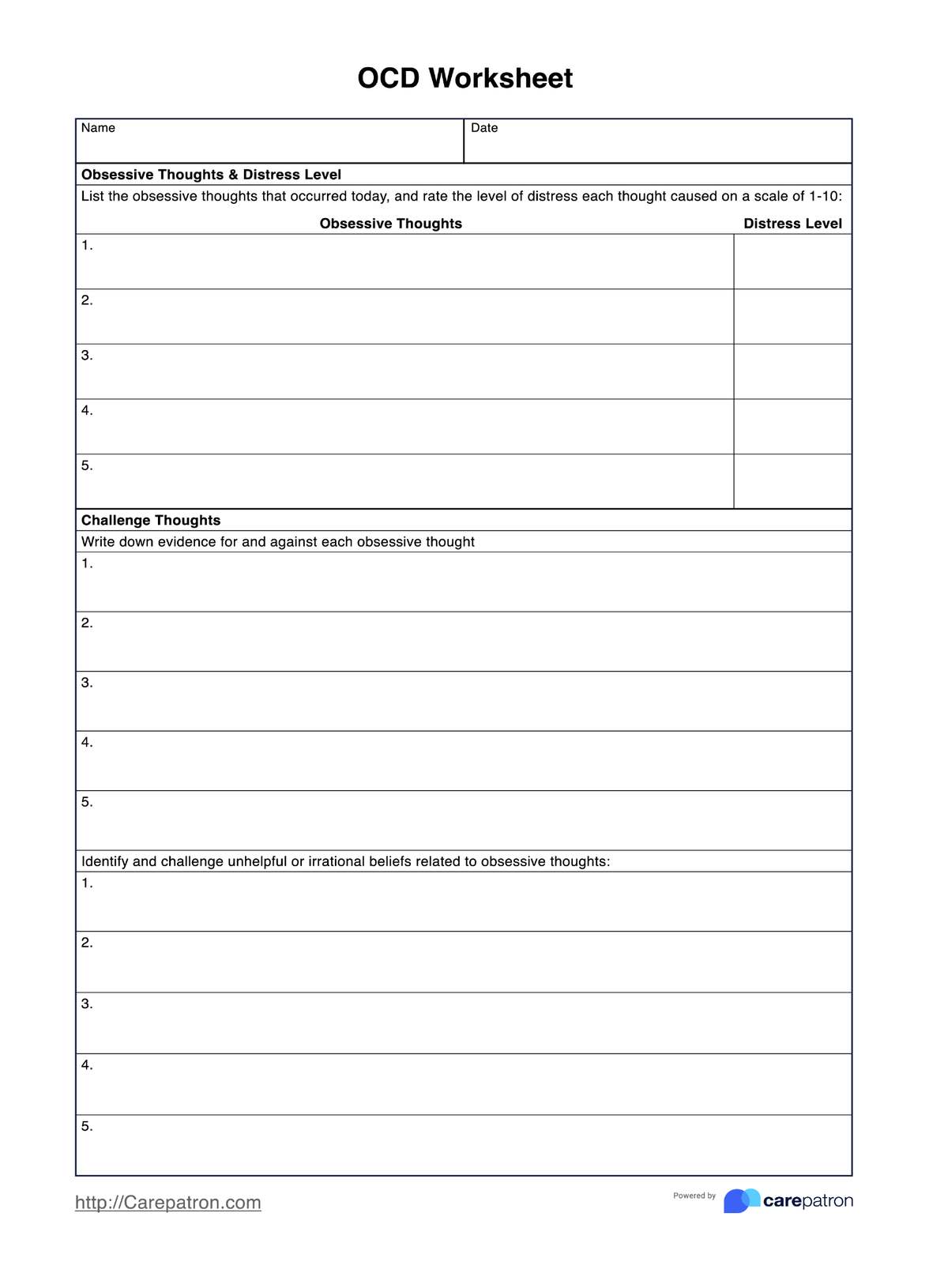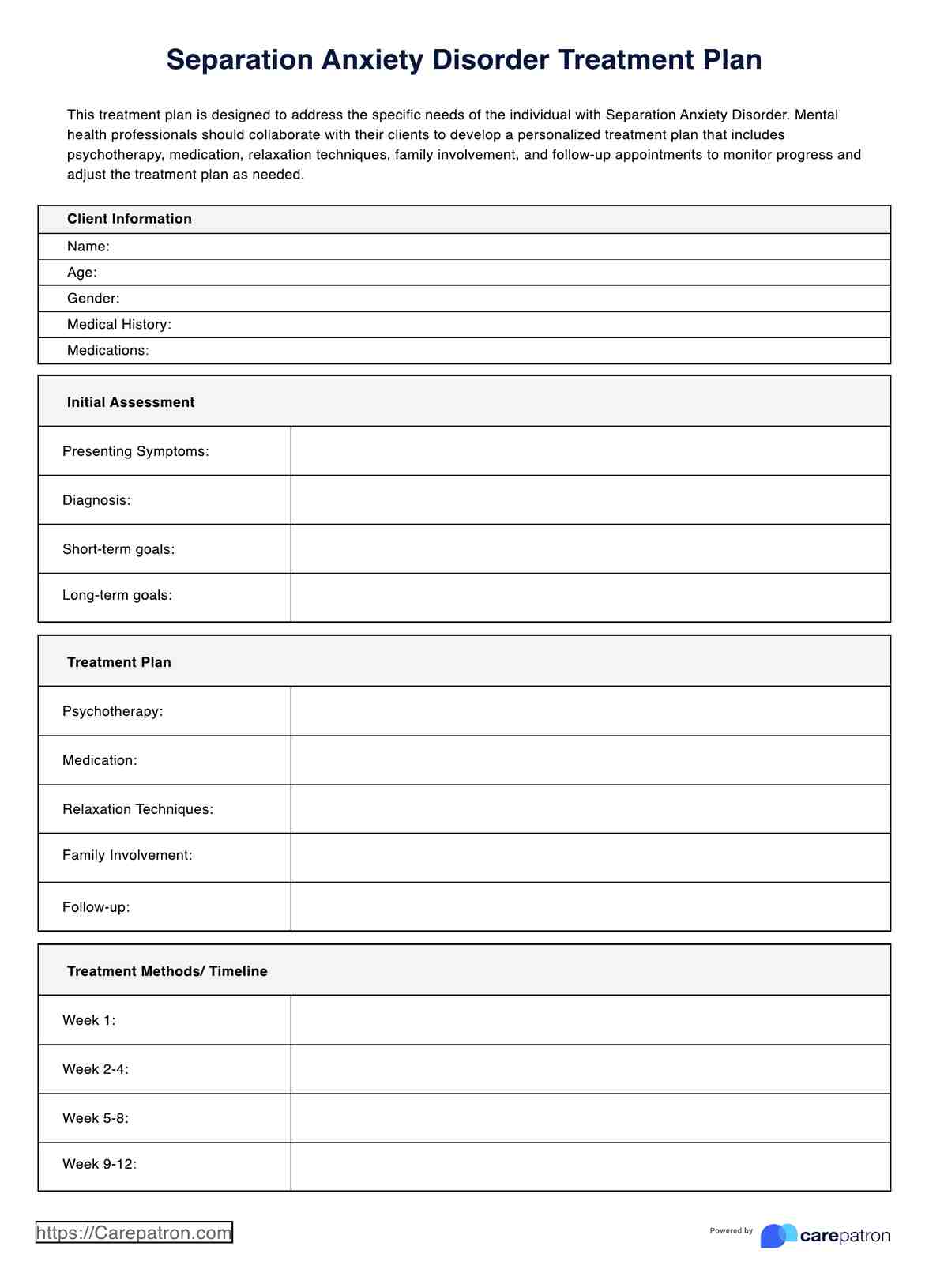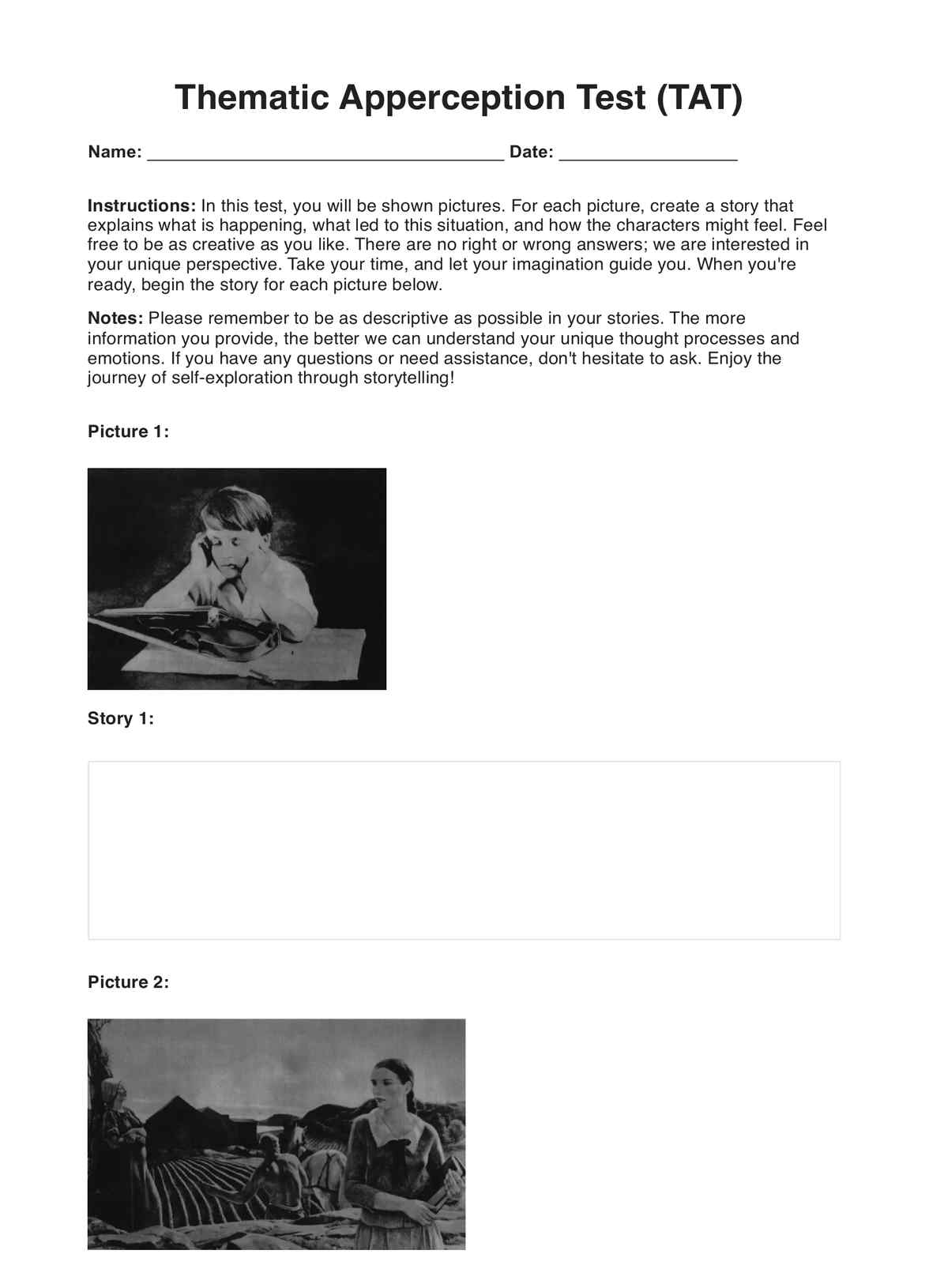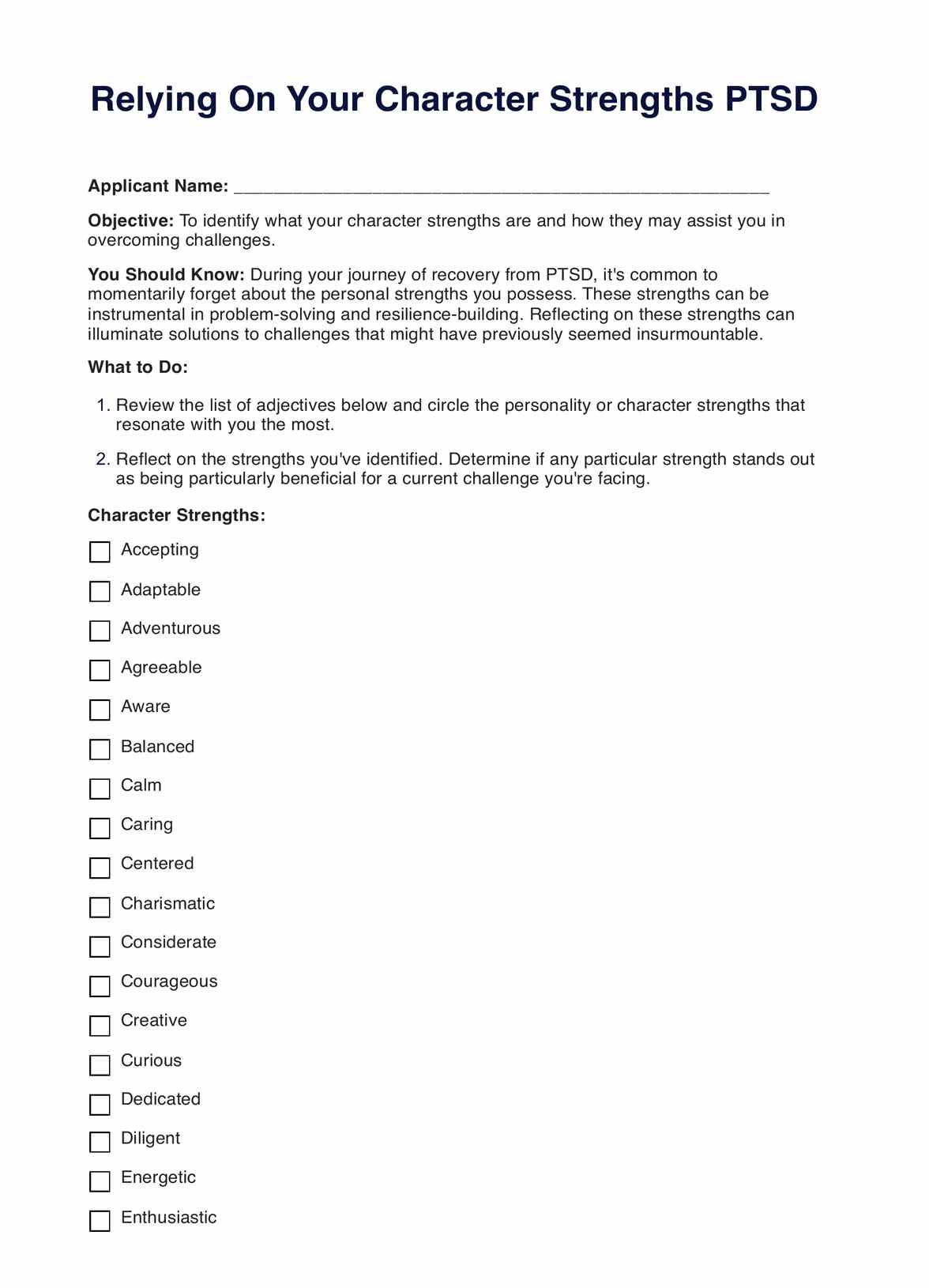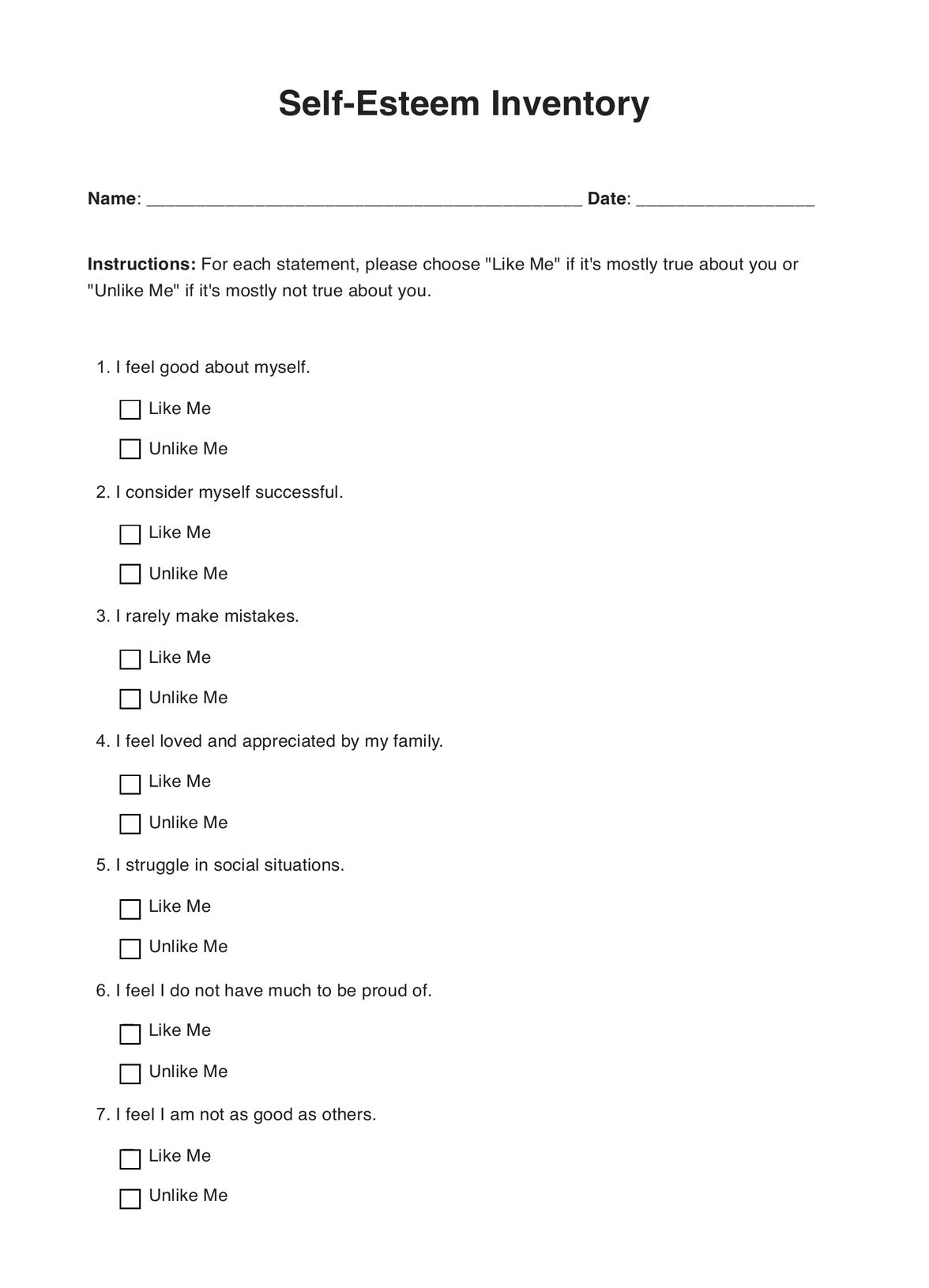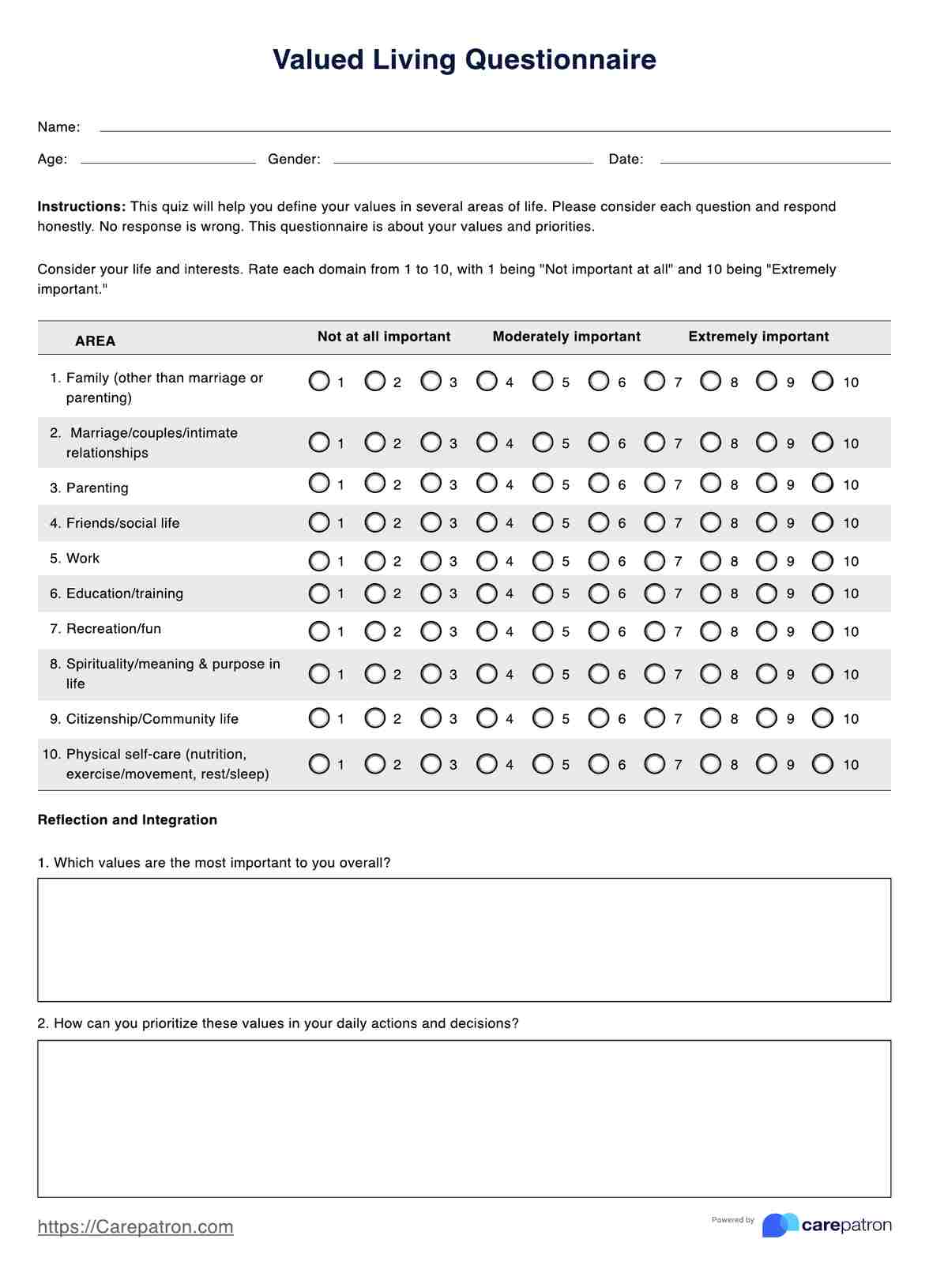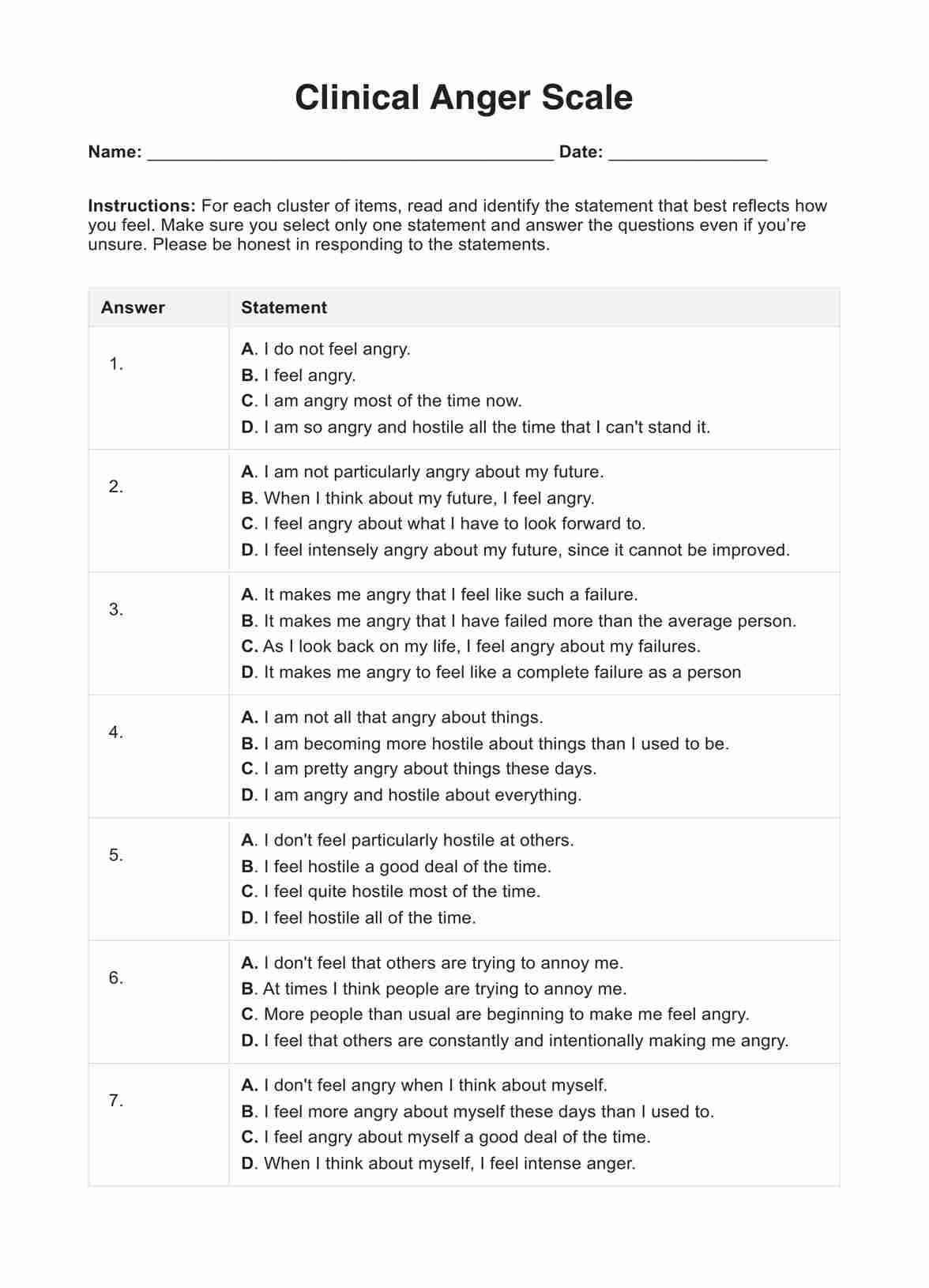Cognitive Distortion Lists
Explore Cognitive Distortion List, a tool to identify, and challenge distorted thoughts, enhancing mental well-being in therapy sessions.


What is a Cognitive Distortion List?
A Cognitive Distortion List is an essential tool for practitioners, offering a comprehensive catalog of irrational, exaggerated, or inaccurate thought patterns that clients may exhibit. These distortions often take the form of negative thinking and can significantly skew one's perception of reality. As a practitioner, you can leverage this list as part of cognitive-behavioral therapy (CBT) to aid your clients in identifying, challenging, and modifying these detrimental thought patterns.
The list encompasses various distortions such as 'all-or-nothing thinking' (viewing situations in absolute terms), 'overgeneralization' (making sweeping conclusions from a single event), 'mental filter' (focusing solely on the negatives while disregarding positives), and 'catastrophizing' (anticipating worst-case scenarios).
As a therapist, clearly understanding these distortions is crucial for helping your clients manage them effectively. Once clients recognize when they succumb to these distorted thought patterns, they can challenge them, substitute them with more rational thoughts, and ultimately enhance their mental well-being.
This explainer video concisely overviews cognitive distortions and their influence on emotions and actions. It could serve as a valuable resource for both you and your clients.
For additional resources on cognitive distortions and effective tools to handle them, explore the Cognitive Distortion Lists and other templates on Carepatron. The platform offers a wealth of resources for therapists and their clients, including cognitive distortion lists, which can enrich the therapeutic process and foster client progress.
Cognitive Distortion Lists Template
Cognitive Distortion Lists Example
How does it work?
A Cognitive Distortion List is an invaluable tool for practitioners, designed to help clients identify and challenge their distorted thought patterns. Here's a step-by-step guide on how to use it:
Step 1: Familiarize Yourself with Cognitive Distortions
As a practitioner, it's important to thoroughly understand cognitive distortions - irrational or exaggerated thought patterns that can lead to emotional distress. This knowledge is crucial in guiding your clients through identifying these distortions.
Step 2: Acquire a Printable Cognitive Distortion List
Get a printable Cognitive Distortion List, which typically comprises common cognitive distortions such as all-or-nothing thinking, overgeneralization, mental filter, and catastrophizing.
Step 3: Introduce the List to Your Clients
Explain to your clients what each cognitive distortion means and how it might manifest in their thinking. This step is crucial in helping your clients understand their thought processes better.
Step 4: Encourage Clients to Identify Their Cognitive Distortions
Guide your clients to reflect on their thoughts and feelings and identify any thought patterns that align with the distortions listed. Encourage honesty and openness during this process.
Step 5: Assist Clients in Challenging Their Distorted Thoughts
Once your clients have identified their cognitive distortions, the next step is to help them challenge these thoughts. Ask them whether their thoughts are based on facts or distortions. Help them develop more rational, balanced thoughts to replace the distorted ones.
Step 6: Advocate Regular Practice
Using a Cognitive Distortion List should not be a one-time activity. Encourage your clients to routinely practice identifying and challenging their distortions. The more they practice, the better they'll manage these distortions.
Cognitive distortions are common, but if they cause significant distress or interfere with daily life, it may be necessary to explore further therapeutic interventions.
When would you use this Template?
The Cognitive Distortion List is a versatile tool for mental health practitioners, offering a wealth of applications across different stages of therapy. Here are seven key instances when this list proves particularly beneficial:
- Initial Client Evaluation: In the initial therapy stages, the Cognitive Distortion List aids in identifying your client's distorted thinking patterns. Understanding these early on enables you to customize your therapeutic approach effectively.
- Psychoeducation: The list serves as an excellent resource for psychoeducation. You can use it to explain the concept of cognitive distortions to your clients. By providing tangible examples, you enhance their self-awareness and understanding of how such distortions impact their thoughts, feelings, and actions.
- Therapy Planning: The Cognitive Distortion List can inform your therapy planning process. Once you've identified the specific distortions in your client's thought patterns, you can develop strategies tailored to address these distortions, making your therapeutic interventions more targeted and effective.
- Cognitive Restructuring: During therapy, the list guides cognitive restructuring exercises. Clients can use it to track, identify, and challenge distortions, enhancing their mental well-being through active engagement with their cognitive processes.
- Homework Assignments: The list can be used to develop homework assignments, enabling clients to practice identifying and challenging cognitive distortions, reinforcing therapy skills, and fostering personal growth.
- Progress Tracking: As a practitioner, you can use the list to track progress over time. By regularly reviewing the list with your clients, you can assess how well they're managing their cognitive distortions, provide feedback, and adjust your therapeutic approach as needed.
- Post-Therapy Support: Even post-therapy, the Cognitive Distortion List is a useful resource. Clients can use it to monitor their thoughts, identify distortions, and avoid reverting to old patterns.
Benefits
The Free Cognitive Distortion List is an instrumental tool that offers numerous benefits to therapists and clients.
1. In-depth Understanding
This list aids in decoding the complexities of cognitive distortions, serving as a valuable educational resource. It allows therapists and clients to better understand the nuances of cognitive processes, leading to more effective therapy sessions.
2. Personalized Therapy Approach
By recognizing these distortions early on, therapists can tailor their approach and strategies, resulting in more personalized and impactful therapy sessions. This customization ultimately enhances the therapeutic relationship and outcomes.
3. Facilitates Client Engagement
The Free Cognitive Distortion List encourages active participation from clients in therapy. It empowers them to monitor their thoughts, identify distortions, and challenge them, fostering self-awareness and personal growth. This active engagement promotes a sense of ownership over their mental health journey.
4. Reinforces Learning Outside Therapy
This list is useful during therapy sessions and is a tool for creating homework assignments. These assignments encourage clients to continue practicing and reinforcing the skills learned during therapy, promoting continuous learning and application outside the therapy room.
5. Monitors Progress
Regularly reviewing the list can provide valuable insights into how well clients manage their cognitive distortions, allowing for adjustments in therapy techniques if needed.
6. Supports Long-term Mental Health
Lastly, even after therapy concludes, the Free Cognitive Distortion List remains a valuable resource. Clients can use it as a maintenance tool to prevent relapse into old distorted thinking patterns. It serves as a long-term support system, assisting clients in maintaining their mental health and well-being.
Research & Evidence
The concept of cognitive distortions was first introduced by psychiatrist Aaron T. Beck in the 1960s as part of his pioneering work on cognitive therapy and later elaborated by psychologist David Burns. Beck posited that individuals suffering from mood disorders often held irrational beliefs or distorted thinking patterns contributing to their conditions.
Since its inception, extensive research and empirical evidence have supported using tools such as the Cognitive Distortion List in therapeutic settings. Numerous randomized controlled trials and qualitative research studies have demonstrated the effectiveness of identifying and challenging cognitive distortions as a crucial part of cognitive-behavioral therapy (CBT).
For instance, a meta-analysis of online learning studies highlighted the effectiveness of using such lists in teaching cognitive restructuring techniques. The research pointed out that these lists help individuals monitor their thoughts, identify distortions, and replace them with more accurate and helpful thoughts, leading to significant improvements in mental well-being.
Moreover, institutions like Johns Hopkins have developed evidence appraisal tools, such as the Research Evidence Appraisal Tool, that support using evidence like the Cognitive Distortion List. This tool helps practitioners decide if the evidence is quantitative or qualitative and how to use that evidence to support their practice.
The CDC's Understanding Evidence tool is another resource that underscores the importance of tools like the Cognitive Distortion List. It is designed to help researchers, practitioners, and policymakers understand and utilize the best available research evidence.
References
- Mfa, R. J. S. (2022, October 25). What Are Cognitive Distortions and How Can You Change These Thinking Patterns? Healthline. https://www.healthline.com/health/cognitive-distortions
- Mph, J. R. H. M. (2022). Common Cognitive Distortions & How to Combat Them. Verywell Health. https://www.verywellhealth.com/cognitive-distortions-5226061
- Psychology, P. (2022, July 4). Cognitive Distortions (Definition + Examples) - Practical Psychology. Practical Psychology. https://practicalpie.com/cognitive-distortions/
- Simply Psychology. (2023, May 26). 13 Cognitive Distortions Identified in CBT. https://www.simplypsychology.org/cognitive-distortions-in-cbt.html
- Star, K., PhD. (2020). Cognitive Distortions of Magnification and Minimization. Verywell Mind. https://www.verywellmind.com/magnification-and-minimization-2584183
Commonly asked questions
Mental health professionals, such as therapists, counselors, and psychologists, use the Cognitive Distortion List. However, it's also a valuable tool for individuals undergoing therapy. The list can help them monitor their thoughts, identify distortions, and work on replacing them with healthier thinking patterns.
The Cognitive Distortion List is typically used in cognitive-behavioral therapy (CBT) sessions but isn't restricted to the therapy room. It can be used anytime an individual notices recurring negative thoughts or feelings. The list helps identify if these thoughts result from cognitive distortions and provides a foundation to challenge and change these distortions.
The Cognitive Distortion List helps individuals identify and understand their distorted thinking patterns. It's used in therapy to aid cognitive restructuring, challenging and replacing these distortions with healthier thoughts. The list can also be used outside therapy for self-monitoring and practice.


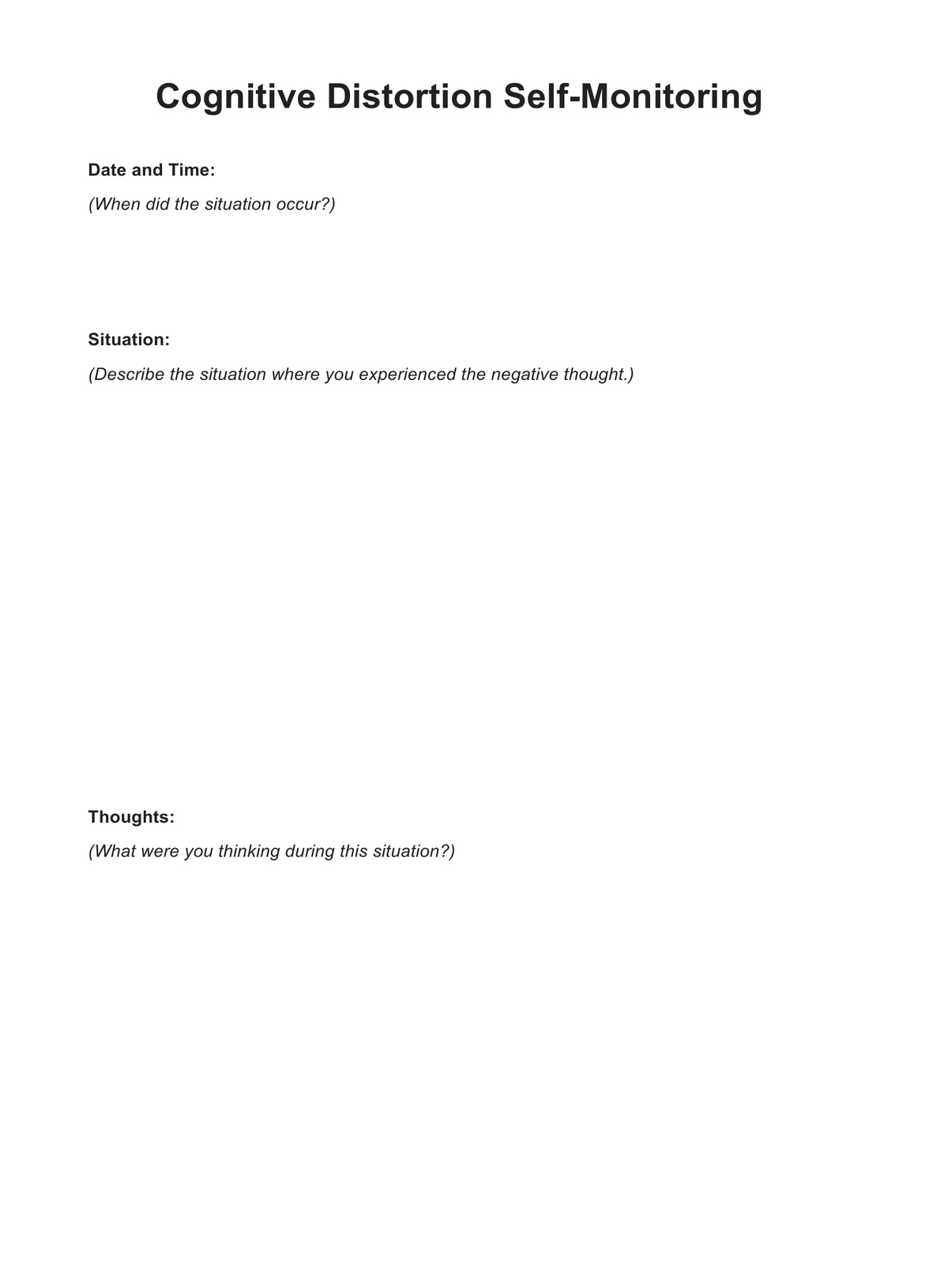
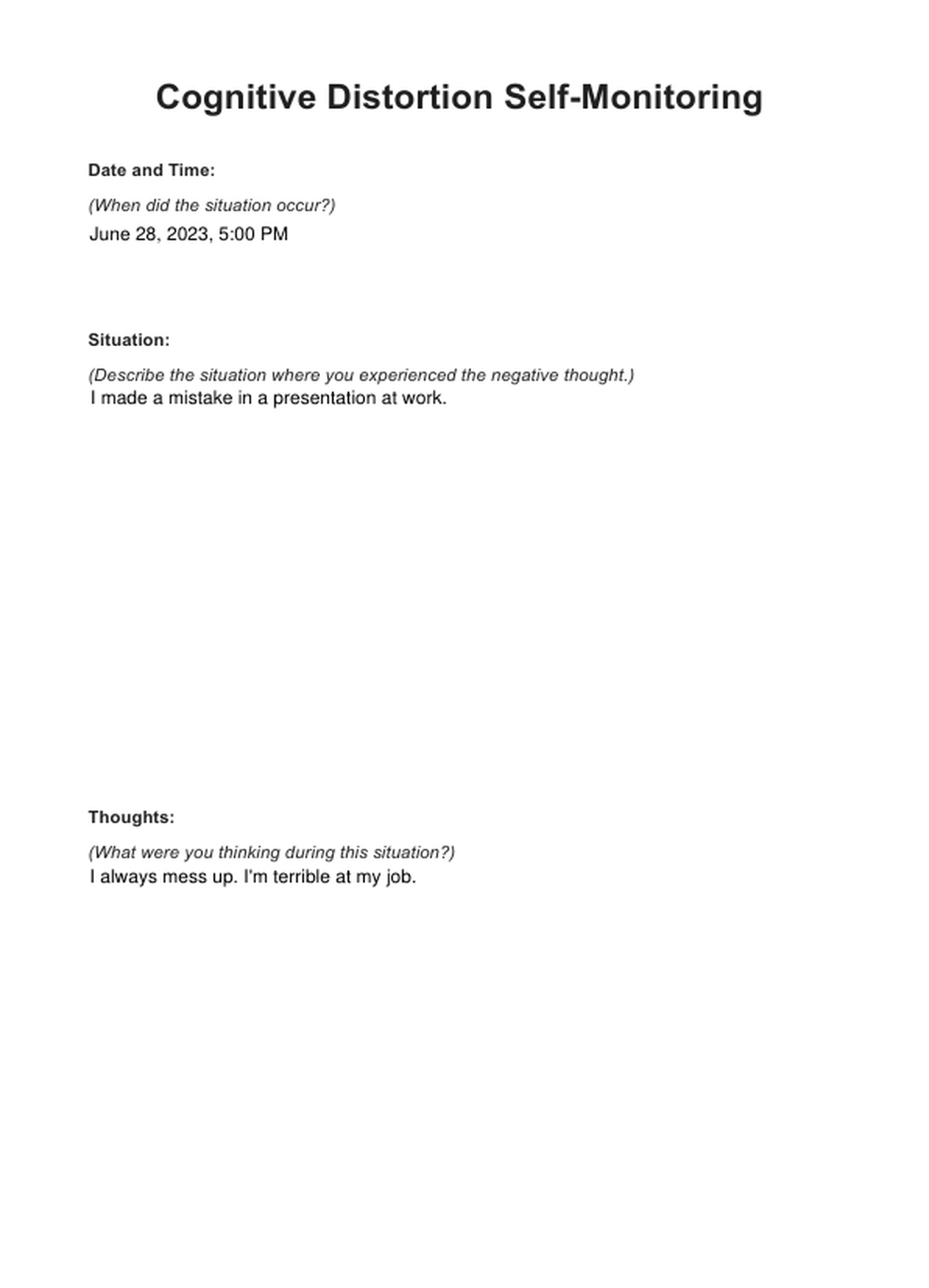















-template.jpg)





















































































